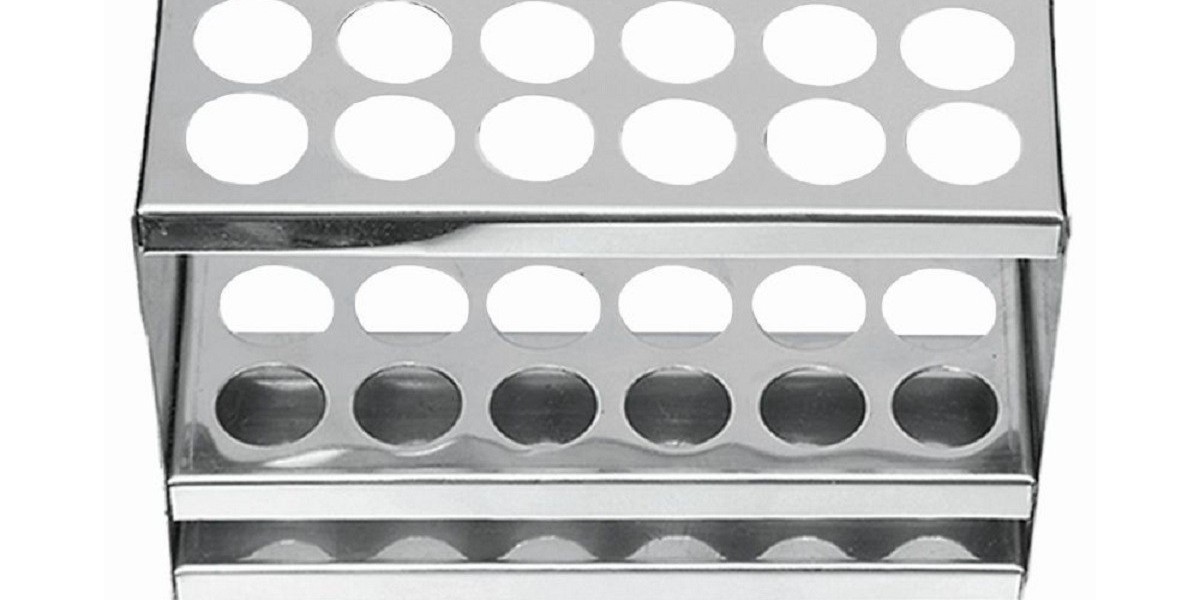Introduction to Ergonomic Solutions in Laboratories
Laboratories are dynamic environments where precision, efficiency, and safety are paramount. From conducting experiments to analyzing samples, every aspect of laboratory work requires careful consideration. In recent years, there has been a growing emphasis on ergonomic solutions to enhance efficiency and reduce the risk of repetitive strain injuries among laboratory personnel. One area where ergonomic design plays a critical role is in the development of test tube stand designs.
The Importance of Test Tube Stand Design
Test tubes are ubiquitous in laboratory settings, serving as vessels for holding various samples, reagents, and solutions. However, managing a large number of test tubes efficiently can be challenging without proper organization. Traditional test tube racks, while functional, often lack the ergonomic features necessary to optimize lab workflows. This has led to a shift towards designing test tube stands that prioritize user comfort, accessibility, and safety.
Key Considerations in Ergonomic Test Tube Stand Design
Ergonomic test tube stand design involves a careful balance of functionality, usability, and comfort. Several key considerations guide the development of these stands:
- Accessibility: A fundamental aspect of ergonomic design is ensuring that test tubes are easily accessible to laboratory personnel. This includes factors such as the spacing between individual tube slots, the angle of the tubes for optimal visibility and reach, and the overall layout of the stand to minimize the need for excessive reaching or stretching.
- Stability and Durability: Ergonomic test tube stands must be stable and durable to prevent accidental spills or tip-overs. Stands should be constructed from high-quality materials that can withstand the rigors of daily laboratory use without compromising stability or integrity.
- Versatility: Laboratories often work with a wide range of test tube sizes and configurations. Ergonomic test tube stands should accommodate various tube diameters and lengths to ensure versatility and flexibility in sample handling.
- Ergonomic Features: Beyond basic functionality, ergonomic test tube stands incorporate additional features to enhance user comfort and efficiency. This may include cushioned grips for easier handling, adjustable height settings to accommodate different user preferences, and ergonomic design elements such as rounded edges to reduce the risk of hand fatigue or injury.
Benefits of Ergonomic Test Tube Stand Designs
The adoption of ergonomic test tube stand designs offers numerous benefits to laboratory workflows:
- Improved Efficiency: By optimizing accessibility and organization, ergonomic test tube stands streamline laboratory workflows, reducing the time and effort required to access and handle samples.
- Enhanced Safety: Ergonomic design principles help minimize the risk of accidents and injuries in the laboratory. Sturdy construction and thoughtful design features reduce the likelihood of spills, tip-overs, and repetitive strain injuries among laboratory personnel.
- Increased Productivity: With ergonomic test tube stands, laboratory personnel can work more comfortably and efficiently, leading to increased productivity and throughput in experimental procedures and sample analysis.
- User Satisfaction: Providing laboratory personnel with ergonomic equipment demonstrates a commitment to their well-being and comfort. This fosters a positive work environment and promotes employee satisfaction and retention.chaplet north america
Conclusion
Ergonomic solutions play a vital role in optimizing laboratory workflows and ensuring the safety and well-being of laboratory personnel. Test tube stand designs that prioritize accessibility, stability, versatility, and ergonomic features offer significant advantages in terms of efficiency, safety, productivity, and user satisfaction. By embracing ergonomic principles in test tube stand design, laboratories can enhance their overall efficiency and effectiveness in conducting research and experiments.



